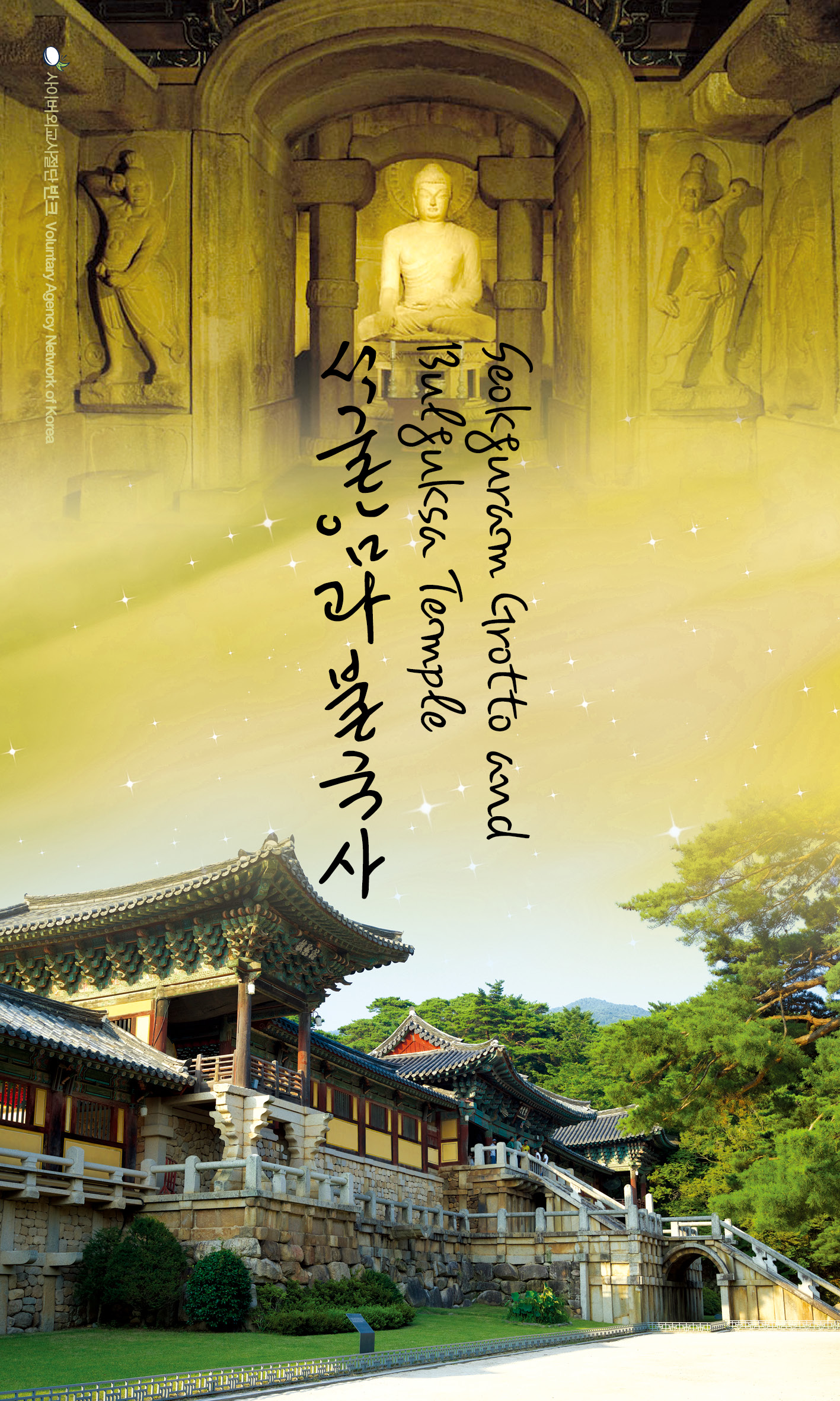 Seokguram Grotto and Bulguksa Temple are Buddhist relics built in the 8th century during the Silla Dynasty (57 BC-AD 935) of Korea. Seokguram is a grotto that enshrines a monumental statue of Buddha and Bulguksa is a Buddhist temple. As situated in Mt. Tohamsan in Gyeongju which was the capital of the Silla, both relics were built by the same person in a similar time.
Seokguram Grotto and Bulguksa Temple are Buddhist relics built in the 8th century during the Silla Dynasty (57 BC-AD 935) of Korea. Seokguram is a grotto that enshrines a monumental statue of Buddha and Bulguksa is a Buddhist temple. As situated in Mt. Tohamsan in Gyeongju which was the capital of the Silla, both relics were built by the same person in a similar time.
Seokguram is an artificial grotto made of about 360 stones. It comprises a square antechamber, a main rotunda, and a corridor connecting the two rooms. Various Buddha statues are elaborately carved on each wall and the main statue of Buddha is situated in the center of the rotunda. The 3.5m-high main statue portrays the enlightenment moment of Sakyamuni. Seokguram shows not only the high level of artistry, but the scientific and technical skills of the Silla people. It is even surprising now to see the dome-shaped ceiling made of square stones, and also the perfect system of natural ventilation, lighting, and management of temperature and moisture.
Bulguksa Temple embodies the world of Buddhism with architecture. A series of wooden buildings are harmoniously placed on artificially raised stone terraces. The Dabotap (Pagoda of Bountiful Treasures) and Seokgatap (Pagoda of Sakyamuni) are situated in the front yard of the Daeungjeon, the main building of Bulguksa. The Dabotap is intricate but splendid, and the Seokgatap has a simple but dignified design. In particular, it surprised the world when the world’s oldest woodblock print, Mugujeonggwang Daedaranigyeong (Spotless Pure Light Dharani Sutra), was found inside the Seokgatap in 1966.
It is considered that Seokguram and Bulguksa are the worldwide masterpieces of Buddhism, created with the high-level artistry, and scientific and technical skills. Seokguram and Bulguksa are creative Korean heritages with outstanding originality and artistry.